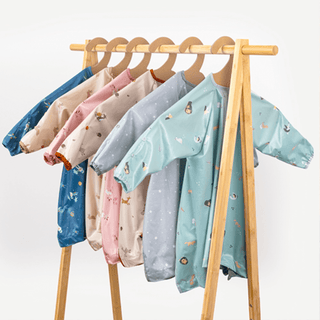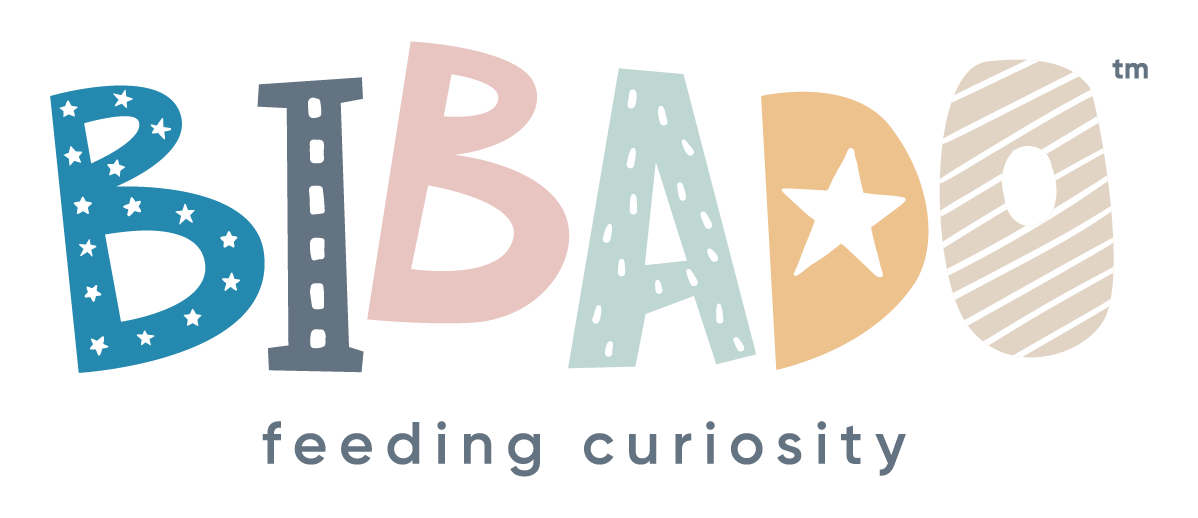Mealtime adventures are better with Bibado! Let our award-winning products make a difference to your weaning journey.
 Shop Now
Shop Now


You’re about to embark on a significant milestone in your parenting journey and a formative step in your little one’s development, but how and when do you introduce solid foods and different textures to your developing baby?

We caught up with Edwena Kennedy, mum of two and a leading paediatric dietician, to get the 101 on how to bring more variety and texture into your baby’s diet safely, successfully, and with minimal stress. Edwena uses a signature tool called The Texture Timeline in her baby-led feeding classes. It’s a super-useful and practical way to ensure that you move your baby through several distinct phases of food discovery to expand their exposure to a broad spectrum of food types, flavours, and textures. Not only will it help with your baby’s development in general, but it’s proven to be a positive factor in preventing and overcoming picky eating. Ready to find out more?

Getting started
It’s only natural that you’re nervous and perhaps even a little anxious about gagging and choking. Remember that you’re not alone. Almost every parent will share the same concerns and reservations as they start the process of introducing variety into their baby’s mealtimes. However, it’s important not to let that fear hold you back and to hold on to the promise of an inspiring journey for you both. Research proves that exposing your baby to as many different types of food as possible before they reach 9-10 months of age helps them develop essential muscles and oral motor skills. These, in fact, facilitate safer and more adventurous eating.
Safety first
Whether you’re starting out with puree or finger food, or perhaps a combination of the two, be sure to check the safety basics are in place by referring to this quick checklist of cues that will let you know that baby is ready to get going:
The Texture Timeline
You’ve established that your LO is ready to go, but where do you start, and at what speed do you go? Let’s head to the texture timeline and discover what to expect in each phase.

Phase Zero
Think of this as the warm-up phase. It’s a handy jumping-off point for parents who are perhaps apprehensive, maybe even a little terrified. This is the phase to ease yourself gently into the process. Here you’ll start with extremely thin, puree consistencies – slightly thicker than milk or breastmilk but still very easy to swallow. A good example would be apple sauce. Phase zero is helpful to establish that baby can swallow safely and for getting them used to sitting at mealtimes. It helps them to understand that they can put things in their mouth and introduces them to a small number of flavours. It can also be beneficial to start here for babies with developmental delays or those who perhaps show a tendency for sensory overwhelm. This phase is optional, and some parents do skip it and move straight to phase one but remember always to move at a flow that suits you and your little one.

Phase One
Here you can begin to offer foods that are thicker or creamier in texture or super soft finger foods. Foods might include sweet potato, avocado and banana, but make sure they pass the squish test (pinch between the thumb and index finger to mimic the pressure of baby’s gums. If it squishes easily, it’s safe to give to baby). This can be an excellent time to introduce utensils and encourage them to use their hands more. Try Dippit, our multi-stage weaning spoon and dipper. It’s dual-ended to let your baby explore flavours with the dipper end, then transition to scooping with the deep contoured spoon when they’re ready. If they are interested in reaching out, offer them the cutlery or let them grab for the food themselves. Remember to keep looking out for those cues. If you’re showing them how to eat by demonstrating yourself and they seem disinterested, it may be a cue that they aren’t ready. It doesn’t mean they aren’t ready for solids. It might just suggest that they want to start with a different approach – i.e., try offering them the food rather than them reaching for it.

Phase Two
Things are beginning to get more interesting! Baby is showing more signs of independence, and your confidence is increasing. It’s time to offer foods that are lumpy or minced textures. As a guideline, babies around 8-9 months will ideally have been exposed to this phase. Typical foods might include oatmeal, quartered blueberries, fish cakes, bean burgers and meat patties. These food types still don’t call for heavy chewing or pulling pieces off. It’s more about mashing with the tongue and managing multiple textures and solids.

Phase Three
You’re encouraged by the progress you are both making so it’s time to be more experimental. The good news is that this stage is just an evolution of phase two. In simple terms, we want to introduce more textures and be even more adventurous. Think crispy, crumbly, spongy, grainy, and stringy textures. Some good examples are mushrooms, tofu, pulled chicken, roasted asparagus, rice, quinoa, and couscous. Parents often wonder how quickly they can introduce new foods to their baby. The great news is there aren’t really any hard and fast rules, except when it comes to allergens. Expert advice suggests leaving a gap of three days with allergens. This allows ample time to detect if there is a reaction or allergy. For all other non-allergen foods, be led by your baby and go at a pace that suits you both.
Progression not perfection
When it comes to the texture timeline, progression rather than perfection is the name of the game. This is not a moment for competitive parenting! You might spend just a couple of days or even meals in the earlier phases, zero through to two, but if you need a couple of weeks, that’s fine too. In phases two and three, you might spend a little longer as you build your confidence and simply because there will be more foods to explore. If you spend up to a month here, it’s ok.
Edwena advises going at a pace that suits you and your baby and advocates a permission-based approach based on their readiness and cues. Though the texture timeline is a sequential approach designed to progress your baby, Edwena advocates moving backwards and forwards between phases if needed. The most important thing is not to get too stuck in one stage for too long, as this can lead to developmental delays.
As a rule of thumb, you should be looking to have moved through all phases by the time your baby reaches 10-11 months of age.
How do I know I’m doing it right?
Keep checking in on the cues your baby is giving you and remember to factor in what else is going on in their world. Things like sleep regression, teething or just feeling a little grouchy can make them less open to exploration on occasion. Chalk this up to experience and don’t let minor wobbles derail you. Some days baby will appear more engaged and interested, but don’t get disheartened if there are days when your little one has less enthusiasm or seems to be refusing food more.
Persevere and remember that babies need multiple exposures to foods before they can display a true preference or dislike. Trust yourself and your baby and use the texture timeline in a way that works best for you. As you progress through the timeline, you’ll develop confidence, and your little one will enjoy a world of food exploration that will set them up to be healthy, happy eaters.
If you’ve enjoyed this blog and want to discover more confidence-boosting tips and expert info on the fascinating world of weaning, head to our Family Hub where you’ll find loads more articles, recipes, ideas and inspiration. You might also want to listen in to the full podcast with Edwena here. She shared so much insight and experience, but we couldn’t fit it all in here!
Follow us for more delicious, nutritious bite-size Bibado goodness